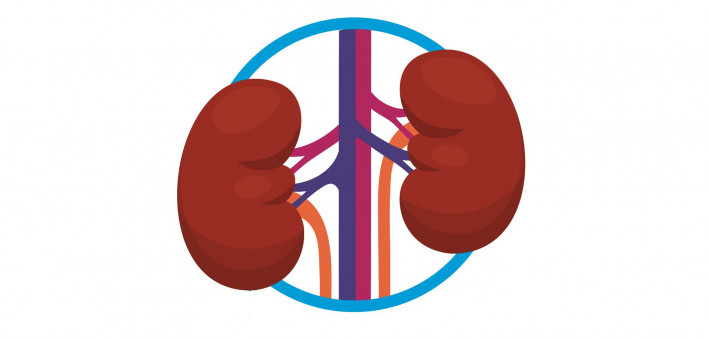Study participants who switched from Truvada (tenofovir disoproxil fumarate/emtricitabine) to the newer Descovy (tenofovir alafenamide/emtricitabine) combination pill for pre-exposure prophylaxis (PrEP) saw improvements in measures of kidney and bone health, though adverse clinical outcomes were rare with both coformulations, researchers reported at the recent IDWeek 2019 conference in Washington, DC.
Truvada, which contains tenofovir disoproxil fumarate (TDF), is among the most widely used medications for HIV treatment and until recently was the only option approved for PrEP. TDF is generally safe and well tolerated, but it can cause kidney impairment and bone loss in susceptible individuals. The tenofovir alafenamide (TAF) in Descovy is an updated version that produces higher levels of the active drug in immune cells. This means TAF can be given at lower doses, leading to less drug exposure for the kidneys, bones and other organs.
Numerous prior studies have shown that switching from TDF to TAF leads to improvement in kidney and bone biomarkers among people taking the drugs as part of an antiretroviral treatment regimen. However, HIV-positive people who switch from TDF to TAF may also experience weight gain and rising blood lipid levels, which has implications for cardiovascular risk. But there’s less evidence about what happens in people taking the drugs for PrEP—a group that tends to be younger and healthier on average than those living with HIV.
The Food and Drug Administration approved Descovy as a second PrEP option earlier this month for people at risk of acquiring HIV via sex, with the exception of receptive vaginal sex. The approval was based on findings from the Phase III DISCOVER trial, which showed that Descovy and Truvada are both highly effective for HIV prevention in men who have sex with men (MSM) and transgender women.
At IDWeek, researchers presented findings on kidney and bone safety outcomes among DISCOVER participants.
The trial enrolled more than 5,300 at-risk MSM and a small number of transgender women. They were randomly assigned to take Descovy or Truvada once daily for up to two years. A total of 905 participants were already taking Truvada at study entry; 465 of them were randomized to the Descovy arm, thus switching drugs.
Kidney Safety
Anthony Mills, MD, of the Men’s Health Foundation in Los Angeles, presented findings from an analysis of kidney safety. Assessments included proteinuria (protein in the urine), estimated glomerular filtration rate (eGFR), urine protein-to-creatinine ratio, markers of proximal tubular function and investigator-reported adverse kidney events.
Overall, at 48 weeks, Descovy was associated with more favorable changes in eGFR and markers of proximal tubular function compared with Truvada, and proteinuria was less common (24% versus 21%, respectively). Descovy recipients had fewer drug-related kidney events (14 versus 26 cases) and serious kidney events (two versus three), and they were less likely to discontinue treatment for this reason (two versus six cases). However, these outcomes were uncommon in both groups, affecting 1% of participants or less.
Participants who switched from Truvada to Descovy at study entry saw significant increases in eGFR—indicating improvement—as early as four weeks after changing drugs as well as decreases in proteinuria.
“The improvements observed in these important markers of kidney health in the overall study population and in those who switched from Truvada to Descovy point to the potential for Descovy to be a preventive option for appropriate people at risk for HIV who may require longer-term PrEP use, including those who have previously taken Truvada for PrEP,” Mills said in a Gilead Sciences press release.
Bone Safety
David Wohl, MD, of the University of North Carolina at Chapel Hill, presented results from a bone mineral density (BMD) substudy that included 383 DISCOVER participants. Within this group, 53 were on Truvada at study entry; of these, 26 were randomized to switch to Descovy.
Participants assigned to the Descovy arm experienced small increases in bone density at the hip and spine at 48 weeks, while Truvada was associated with declines, especially among younger participants. Those who switched from Truvada to Descovy saw significant improvements in BMD at the spine and even more so at the hip compared with those who stayed on Truvada.
What’s more, Descovy recipients were less likely to develop osteopenia (bone thinning) or osteoporosis (more severe bone loss) of the spine. But again, these were rare in both groups, affecting less than 1% of participants. Fractures were equally uncommon in both groups (2%).
“Maintaining bone mineral density is important when considering the potential impact of longer-term PrEP for people at risk for HIV infection,” said Wohl. “These results provide valuable insight into the potential impact of Descovy for PrEP on important measures of bone strength in a diverse population over the course of nearly a year.”
Click here to view the IDWeek 2019 program.







Comments
Comments